Lenovo ThinkPad T14s Gen 6 vs. Gen 5: Snapdragon X Elite or Intel Core Ultra?
Lenovo offers its slim ThinkPad T14s with Intel and Qualcomm hardware, and we can help you pick the right device.
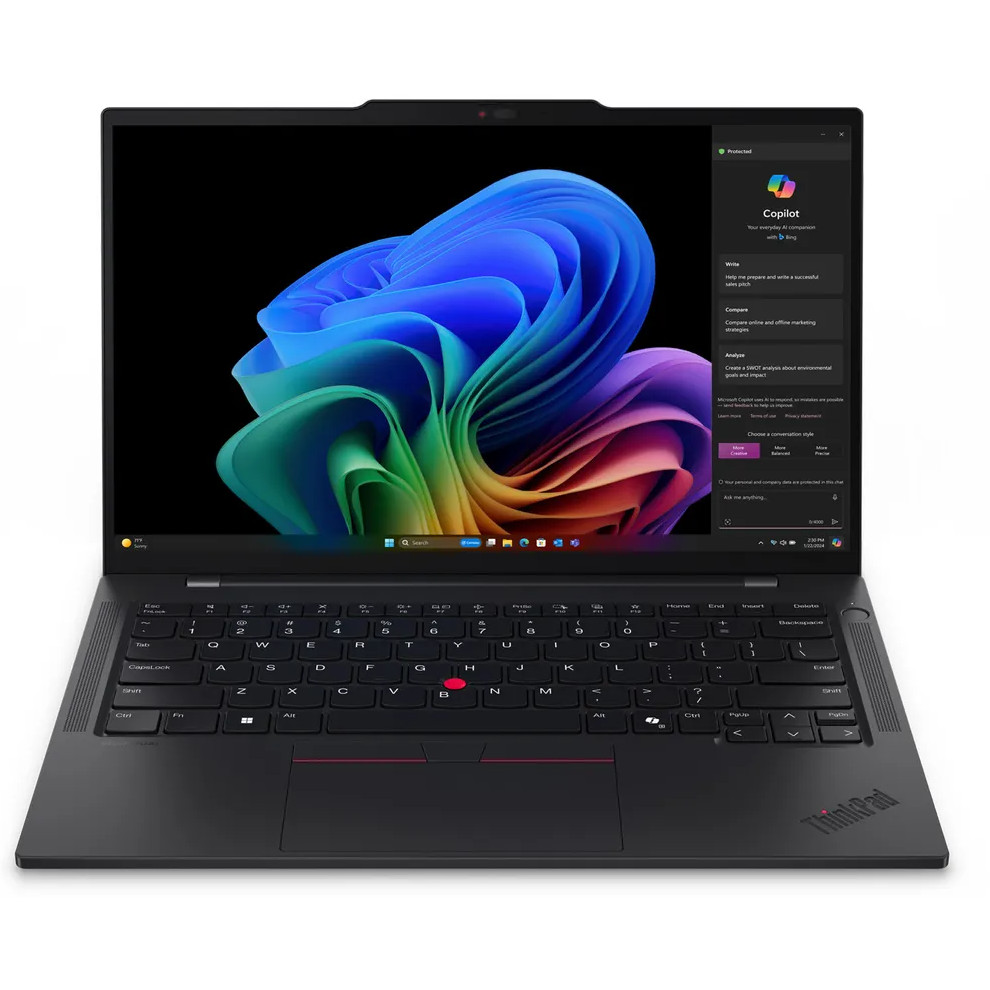
The Qualcomm-based ThinkPad T14s (Gen 6) falls behind with fewer configuration options (at least for now) and a less impressive webcam, but the Snapdragon X Elite's power and efficiency should make it a tempting option. That's especially true if you want to test out new Copilot+ AI features.
For
- Super power and efficiency from X Elite SoC
- Durable and sleek professional design
- Outstanding keyboard
- Generally more affordable for similar hardware
- Works with Copilot+
Against
- 1080p webcam not as impressive
- No 5G (yet)
- Fewer configuration options
- ARM64 requires app emulation in some cases
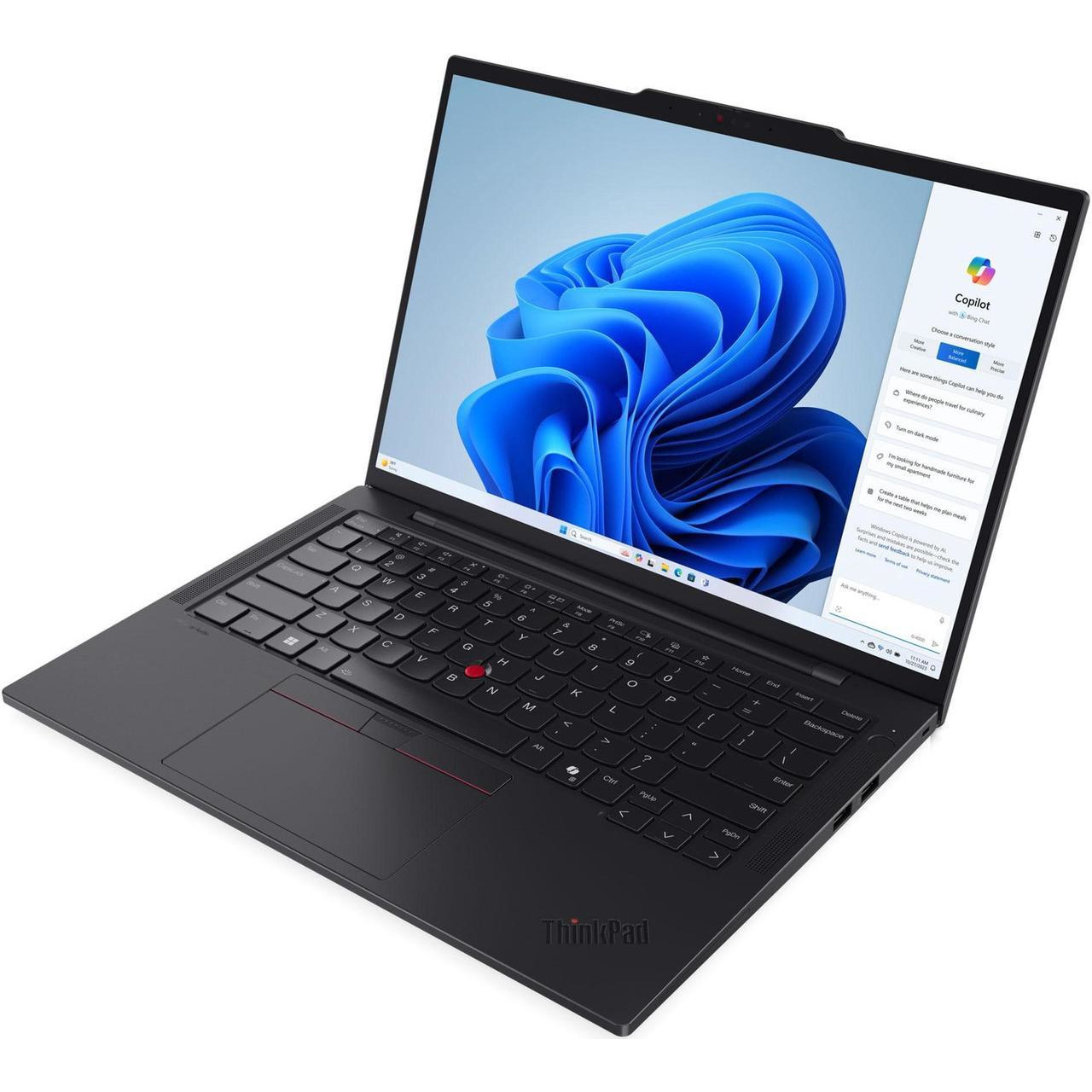
The Intel-based ThinkPad T14s (Gen 5) is available in more configurations, with extra display options, an improved 5MP webcam, and optional 5G connectivity. Its performance and efficiency are good, but the X Elite in the Gen 6 model should offer snappier performance and longer runtimes.
For
- 5G is available now
- Many more configurations available
- 5MP webcam with IR
- Outstanding keyboard
- Intel Core Ultra is still great
Against
- Performance and battery life not as impressive
- More expensive for similar hardware
- No Copilot+
Lenovo's T-series ThinkPads have long been a staple of the business world, and there are now a few models from which you can choose. The T14 remains the flagship, with its T16 coming in as a larger alternative for those needing more screen space.
Then there's the T14s, a thinner, lighter version of the T14 for frequent travelers. Lenovo splits the T14s into Intel and Qualcomm versions; the Gen 5 models have Core Ultra chips, while the Gen 6 models have the new X Elite chips for Windows on ARM.
The T14s models share a lot of similarities, and they can both be viewed as top Windows laptops for professionals. Let's take a closer look at the similarities and differences to help you pick the right PC as your next business partner.
ThinkPad T14s Gen 6 vs. Gen 5: Specifications
Before we get too far into a detailed comparison, it's worth taking a look at the raw specs that make up the business laptops.
| Header Cell - Column 0 | Lenovo ThinkPad T14s (Gen 6) | Lenovo ThinkPad T14s (Gen 5) |
|---|---|---|
CPU | Snapdragon X Elite (X1E-78) | Intel Core Ultra 5 125U, Ultra 5 135U, Ultra 7 155H, Ultra 7 165H, Ultra 7 165U |
GPU | Qualcomm Adreno (integrated) | Intel Graphics, Intel Arc (integrated) |
NPU | Qualcomm Hexagon (45 TOPS) | Intel AI Boost (~11.5 TOPS) |
RAM | 16GB, 32GB, 64GB LPDDR5x-8448MHz (soldered) | 16GB, 32GB, 64GB LPDDR5x-7567MHz (soldered) |
Storage | 256GB, 512GB, 1TB M.2 PCIe 4.0 NVMe SSD (upgradeable) | 256GB, 512GB, 1TB, 2TB M.2 PCIe 4.0 NVMe SSD |
Display | 14 inches, 1920x1200 (FHD+), IPS, touch, 400 nits, anti-glare, 16:10, 60Hz, | 14 inches, 1920x1200 (FHD+), touch or non-touch, IPS, 400 nits, anti-glare, 16:10, 60Hz |
| Row 6 - Cell 0 | 14 inches, 1920x1200 (FHD+), IPS, 400 nits, anti-glare, 16:10, 100% sRGB, 60Hz, low power | 14 inches, 1920x1200 (FHD+), IPS, 400 nits, anti-glare, 100% sRGB, 60Hz, low power |
| Row 7 - Cell 0 | 14 inches, 2880x1800 (2.8K), OLED, 400 nits, anti-reflective, 16:10, 100% DCI-P3, 120Hz, DisplayHDR True Black 500, Dolby Vision | 14 inches, 1920x1200 (FHD+), touch, IPS, 500 nits, anti-glare, 16:10, 100% sRGB, 60Hz, Privacy Guard |
| Row 8 - Cell 0 | Row 8 - Cell 1 | 14 inches, 2880x1800 (2.8K), OLED, 400 nits, anti-reflective, 16:10, 100% DCI-P3, 120Hz, DisplayHDR True Black 500, Dolby Vision |
Camera | FHD + IR, Computer Vision, privacy shutter | 5MP + IR, Computer Vision, privacy shutter |
Speakers | Dual 2W, Dolby Audio | Dual 2W, Dolby Audio |
Ports | Two USB4, HDMI, two USB-A, 3.5mm audio, Nano-SIM slot (optional) | Two Thunderbolt 4, HDMI, two USB-A, 3.5mm audio, Nano-SIM (optional), Smart Card reader (optional) |
Wireless | Wi-Fi 7, Bluetooth 5.3, 5G Sub-6 (optional) | Wi-Fi 6E, Wi-Fi 7, Bluetooth 5.3, 5G Sub-6/4G LTE (optional) |
Battery | 58Wh | 58Wh |
Dimensions | 12.35 x 8.64 x 0.67 inches (313.6mm x 219.4mm x 16.9mm) | 12.35 x 8.64 x 0.65 inches (313.6mm x 219.4mm x 16.6mm) |
Weight | From 2.72 pounds (1.24kg) | From 2.73 pounds (1.24kg) |
Material | Black: carbon fiber (top), aluminum (bottom) | Grey: Aluminum; Black: carbon fiber (top), aluminum (bottom) |
Price | From $2,699 | From $2,329 |
ThinkPad T14s Gen 6 vs. Gen 5: Price and availability
The new ThinkPad T14s (Gen 6) with Snapdragon X Elite System-on-Chip (SoC) starts at about $2,699 before any of Lenovo's frequent discounts. Lenovo's approach, at least with ThinkPad, is to show the estimated price before offering a significant discount; at the time of writing, the laptop is $945 off, bringing it down to $1,755.
There's currently just one model available, and it's a rather high-end entry with 32GB of LPDDR5x RAM, 1TB M.2 PCIe 4.0 NVMe solid-state drive (SSD), and an FHD+ non-touch display with low power designation. Lenovo lists a lot of specs on the Qualcomm Gen 6 side, so hopefully, we will soon see more configuration options come to market.
The ThinkPad T14s (Gen 5) also has a high price before discounts. It starts at $2,329, but at the time of writing comes in at $1,398. That's for a model with an Intel Core Ultra 5 125U processor (CPU), 16GB of LPDDR5x RAM, 256GB M.2 PCIe 4.0 NVMe SSD, and a 14-inch FHD+ IPS non-touch display.
The Gen 5 model has many more configuration options. You can get up to a Core Ultra 7 165U vPro chip, 64GB of RAM, 2TB SSD, 2.8K OLED display, and 5G connectivity.
ThinkPad T14s Gen 6 vs. Gen 5: Design and features

The Gen 5 and Gen 6 ThinkPad T14s models are nearly identical, so you don't have to make any major sacrifices in that regard. The dimensions are practically the same (the Intel model is listed as being 0.02 inches thinner), and they weigh the same if you're looking at models with a black finish. They come in at about 2.72 pounds (1.24kg) thanks to a carbon fiber blended top and an aluminum base.
The Intel-based Gen 5 also has a grey finish alternative that uses aluminum for the top and the lid. The extra metal bumps the weight up to 3.19 pounds (1.45kg), but that's still plenty portable. Both devices have MIL-STD-810H durability certification and have a long reputation for reliability.
Both laptops have class-leading ThinkPad keyboards that remain comfortable throughout the day. Keycaps are large with a slightly cupped top, 1.5mm key travel is more than enough to prevent fatigue, and all the right keys have dedicated shortcuts for quick navigation. Both versions of the laptop have a Copilot key for quick access to the AI assistant.
Touchpads don't use haptics, but they have a satisfying click and track well. Part of the vertical space is taken up by physical TrackPoint mouse buttons, used in tandem with the red pointing nub located in the middle of the keyboard. Diehard ThinkPad fans can rest easy knowing their favorite way to navigate is still available.
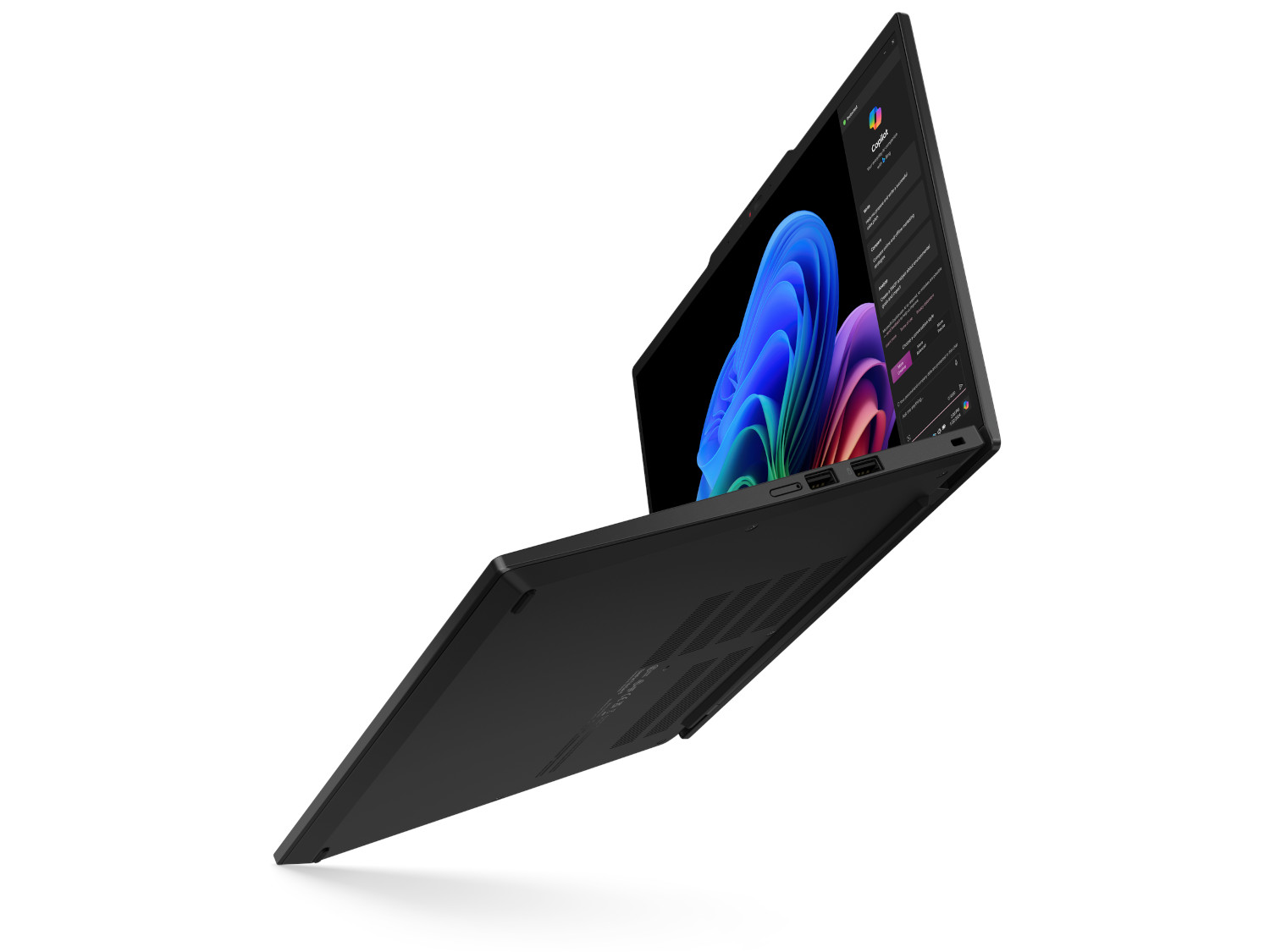
Flanking the keyboard on both devices are top-firing 2W speakers with Dolby Audio support. They do a good job for a business laptop, and you shouldn't have a problem listening in on a conference call without a headset.
The laptops are available with Wi-Fi 7, and some Intel models are still using Wi-Fi 6E. Bluetooth 5.3 handles wireless accessories. For frequent travelers who need to stay in touch everywhere, 5G connectivity is an option.
It's unfortunately not yet configurable on the Snapdragon model, but it's expected to arrive in the near future when Lenovo releases extra configurations. At the time of writing, it means you'll have to go with the Intel model for the extra wireless ability. Lenovo offers 4G LTE for about $194 or 5G for about $298.
Physical connectivity has a couple of notable differences. The Gen 6 model uses dual USB4 instead of Thunderbolt 4, as the latter is an Intel product. The Gen 5 model (with Intel chips) understandably uses Thunderbolt 4. The branded connection has higher minimum requirements for transfer speeds and power, but ultimately, most users won't notice a difference. Windows Central's Zachary Boddy wrote a great article explaining Thunderbolt 4 docking compatibility for USB4 that can hopefully provide further insight.
The laptops otherwise include HDMI 2.1, dual USB-A, 3.5mm audio, and a nano-SIM slot for PCs with WWAN. The Intel model also has an optional Smart Card reader slot aimed at enterprise buys.
ThinkPad T14s Gen 6 vs. Gen 5: Display
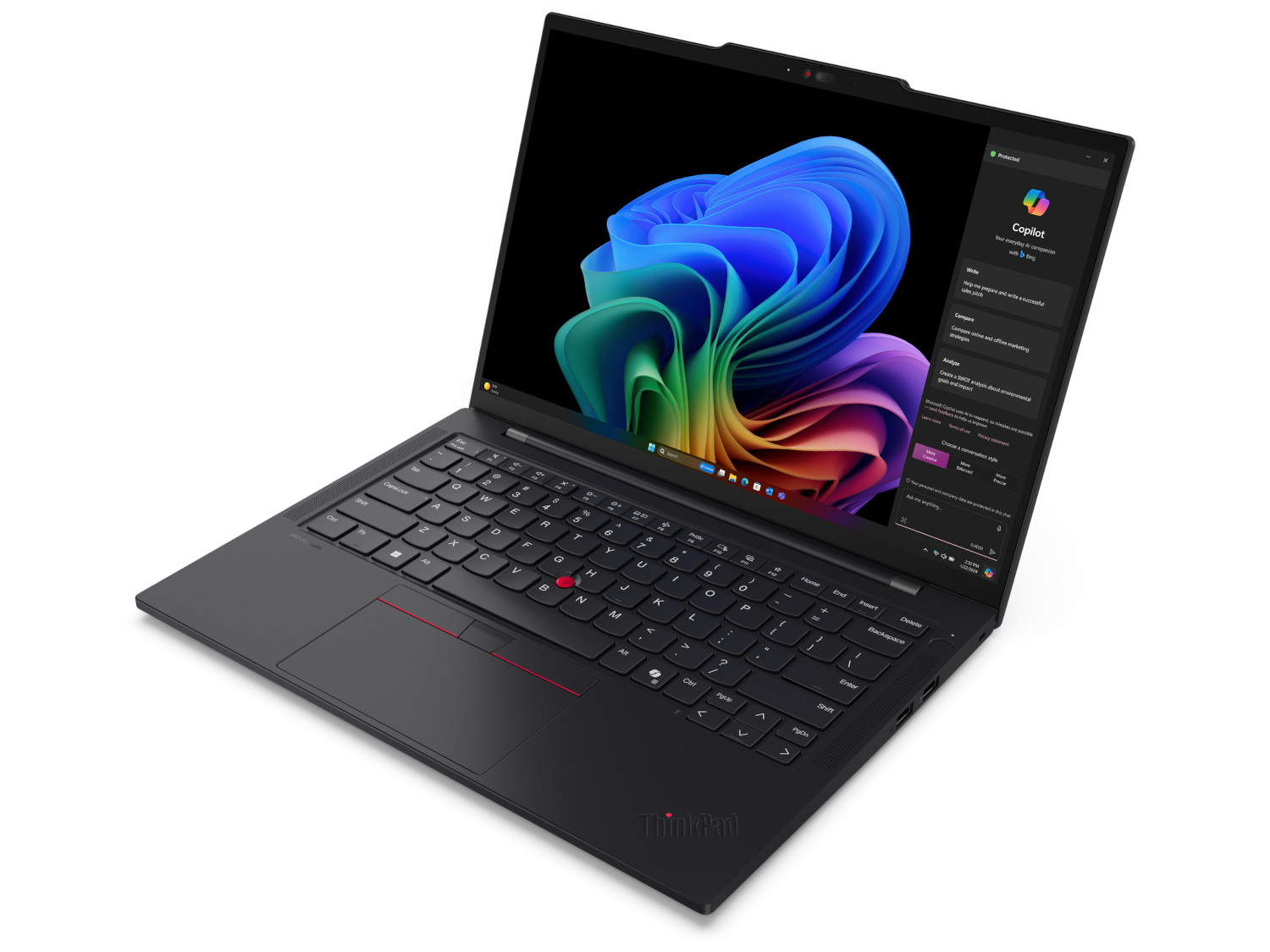
The Intel-based T14s (Gen 5) is available with more display options. Notably, if you want a screen with Lenovo's ThinkPad Privacy Guard for extra security when working in public, you'll have to stick with the Intel machine. The T14s (Gen 5) also offers a non-touch FHD+ option, which helps reduce the price, whereas the Gen 6 model only has touch FHD+.
Both laptops have the top-tier 2.8K OLED display option with an anti-reflective finish, 100% DCI-P3 color, 120Hz refresh rate, Dolby Vision, and DisplayHDR True Black 500 certification. You can also find the low-power FHD+ screen in both laptops, ideal if you'd like to maximize battery life.
It's unclear if Lenovo will bring the two other displays found in the Gen 5 model to the Snapdragon X Elite model, but I wouldn't wait around to find out. Lenovo usually includes all current and upcoming hardware in its PSRef documents, and the Gen 6 unit only has three options listed.
If I'm recommending an option for the regular buyer, it has to be the OLED display. The higher resolution and faster refresh rate are easier on the eyes, and the contrast and color from OLED tech are incredible. It's about $343 more compared to the baseline FHD+ non-touch display.
Lenovo nestles its camera hardware into a raised comms bar above the display. For some reason, the company uses a 5MP webcam in the Intel model, dropping down to 1080p for the Gen 6 unit. The extra pixels should make for a better picture in the Gen 5 model. Both laptops have IR sensors for facial recognition through Windows Hello, shutters for added privacy, and human presence detection for a smooth security experience.
ThinkPad T14s Gen 6 vs. Gen 5: Performance and battery

The biggest differences you'll find between these two laptops are their performance and efficiency. We're expecting to get both of these laptops in for first-hand testing, but until then we can look at results from other laptops we've tested containing Snapdragon X Elite and Intel Core Ultra chips.
Lenovo lists more powerful Core Ultra H-series chips in its documentation, but it appears that the lighter U-series chips are the ones primarily on offer. Intel Core Ultra 5 125U, Core Ultra 7 155U, and their vPro alternatives are configurable.
On the Gen 6 side, only the Snapdragon X Elite (X1E-78) SoC is available. That's the lowest-tier X Elite that lacks a dual-core boost ability, but it's still a fantastic chip. The ASUS Vivobook S 15 we reviewed uses the same hardware, and it scored better than the Core Ultra 7 155H in the reviewed ThinkPad X1 Carbon (Gen 12).
| Header Cell - Column 0 | ASUS Vivobook S 15 (X1E-78) | ThinkPad X1 Carbon G12 (Core Ultra 7 155H) |
|---|---|---|
Geekbench 6 (single / multi) | 2,447 / 14,248 | 2,258 / 11,422 |
Cinebench 2024 (single / multi) | 108 / 1,128 | 95 / 575 |
The numbers listed above are just a rough look at similar chips, but you can see how strong the X Elite chip is even against a more powerful H-series Core Ultra. One of the biggest perks of the ARM-based system is its performance on battery power and actual battery life.
Lenovo says Gen 6 models with a low-power display hit up to 29 hours of local video playback on a charge. The Gen 5 model, with the same 58Wh battery, hits up to 22 hours of local video playback with a Core Ultra 5 135U chip and low-power display. These numbers always come down with regular use, but you can expect better efficiency from the X Elite platform. We'll have more to share when we test these ThinkPad T14s models first-hand.
On the security side of things, Lenovo has a lot to offer. Both laptops have a dTPM 2.0 chip, and the Qualcomm model adds a Microsoft Pluton processor for Copilot+. Both laptops have a Kensington Nano lock slot and an optional fingerprint reader. Lenovo's ThinkShield suite of security tools comes standard, with multiple levels of protection at the BIOS level and beyond.
Because the Snapdragon X Elite is an ARM64 chip designed to run Windows on ARM, some apps that aren't natively compiled for the architecture require emulation. Lenovo states clearly that it has more than 175 ISV certifications on the Gen 6 model, reducing the likelihood that you'll run into compatibility snags. As Windows Central Editor Ben Wilson discovered in his testing, in most cases you shouldn't let ARM64 and x86 compatibility stand in the way of Qualcomm's efficiency and power perks.
ThinkPad T14s Gen 6 vs. Gen 5: Copilot+ and AI
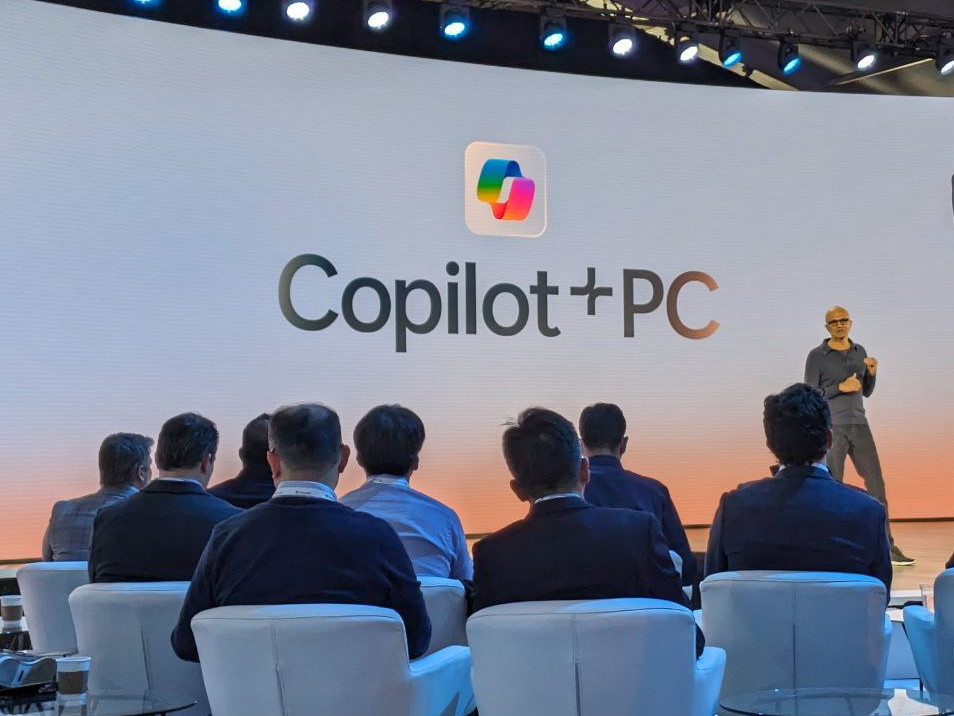
Both of these ThinkPads are considered AI PCs thanks to the inclusion of a Neural Processing Unit (NPU) for local AI acceleration. However, only the Gen 6 model with Snapdragon X Elite SoC is a Copilot+ PC with access to advanced AI tools.

• Best Windows on ARM laptops
• Best Copilot+ PCs
• Best AI laptops
• Windows on ARM FAQ
• Windows 11 apps run on ARM
Copilot+ is an umbrella term created by Microsoft that is used to denote the next-gen AI tools and the PCs that can run them. Copilot+ requires an NPU with at least 40 TOPS of power; the X Elite NPU hits 45 TOPS, while Intel's Core Ultra NPU hits around 11.5 TOPS.
The AI feature that is getting a lot of attention is called Windows Recall. It was delayed by Microsoft to work out security and privacy concerns, but it will eventually offer the ability to intelligently search through things you've seen and done on your PC. Recall is certainly not the only Copilot+ feature. Copilot+ also allows you to:
- Translate video and audio in real time with Live Caption.
- Enhance your video and audio further with advanced Windows Studio Effects.
- Explore advanced AI edits in compatible design and editing software.
- Explore suggested visual and contextual edits in displayed content.
- Leverage Cocreator for advanced local image and text creation.
- Upscale games automatically with Auto Super Resolution.
The Intel-based Gen 5 T14s doesn't get access to these tools, but its NPU can help with Windows Studio Effects and other non-Copilot+ AI tasks.
ThinkPad T14s Gen 6 vs. Gen 5: Which should you buy?
If you're looking for a better webcam, 5G availability, more display options, and strong Core Ultra performance, the Gen 5 T14s should make a great business PC. It has an outstanding keyboard, it's available in a couple of colors, and it's durable and secure.
The ThinkPad T14s (Gen 6) with Snapdragon X Elite brings improved performance and efficiency, but its webcam isn't as impressive, and there are fewer configurations available. 5G connectivity is not yet configurable, which could be a dealbreaker for some. Copilot+ features will be a boon for many users, but you'll want to be sure that the specialized software you use is compatible with ARM64 or can be emulated successfully.
Get the Windows Central Newsletter
All the latest news, reviews, and guides for Windows and Xbox diehards.

Cale Hunt brings to Windows Central more than eight years of experience writing about laptops, PCs, accessories, games, and beyond. If it runs Windows or in some way complements the hardware, there’s a good chance he knows about it, has written about it, or is already busy testing it.
